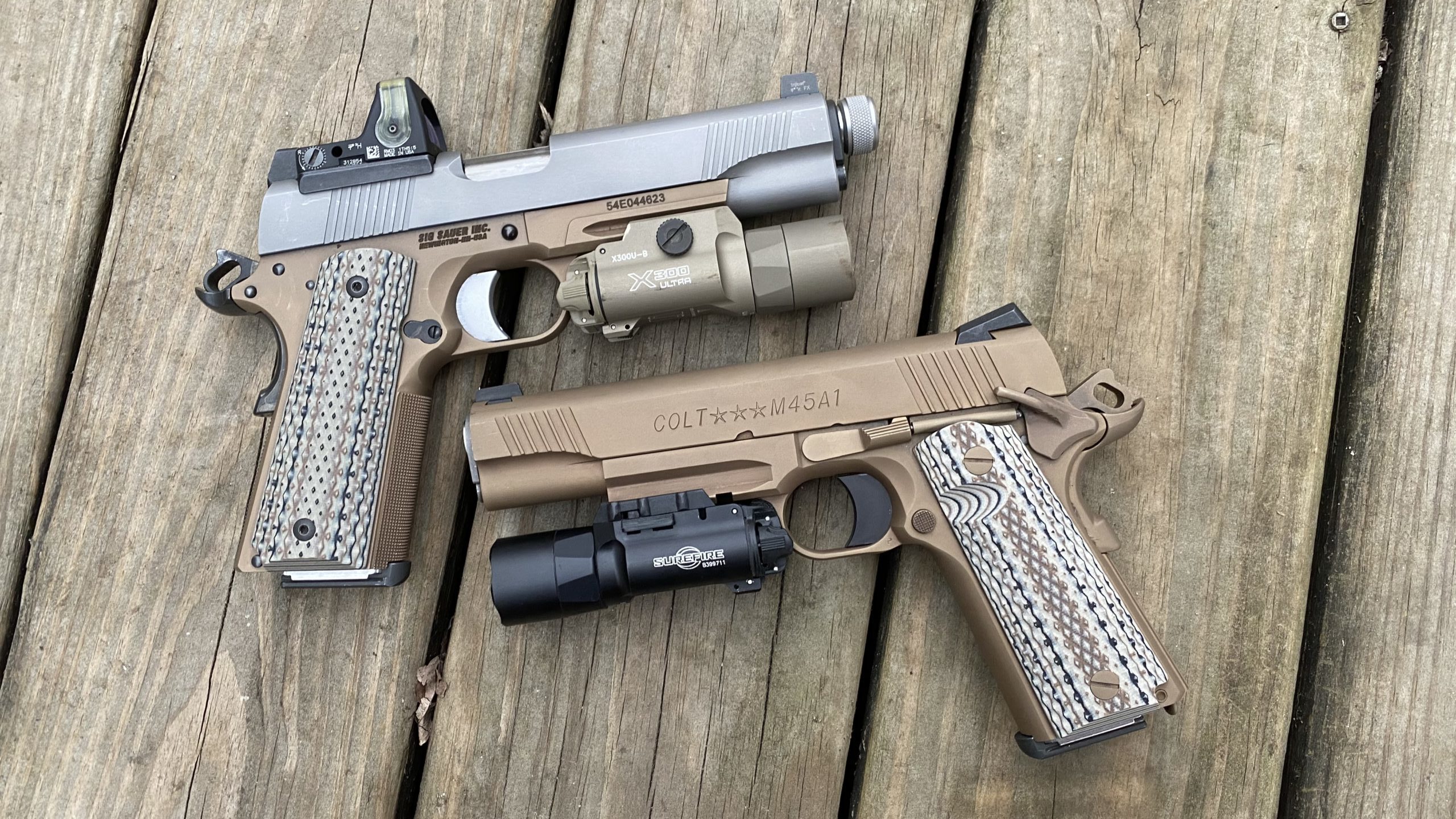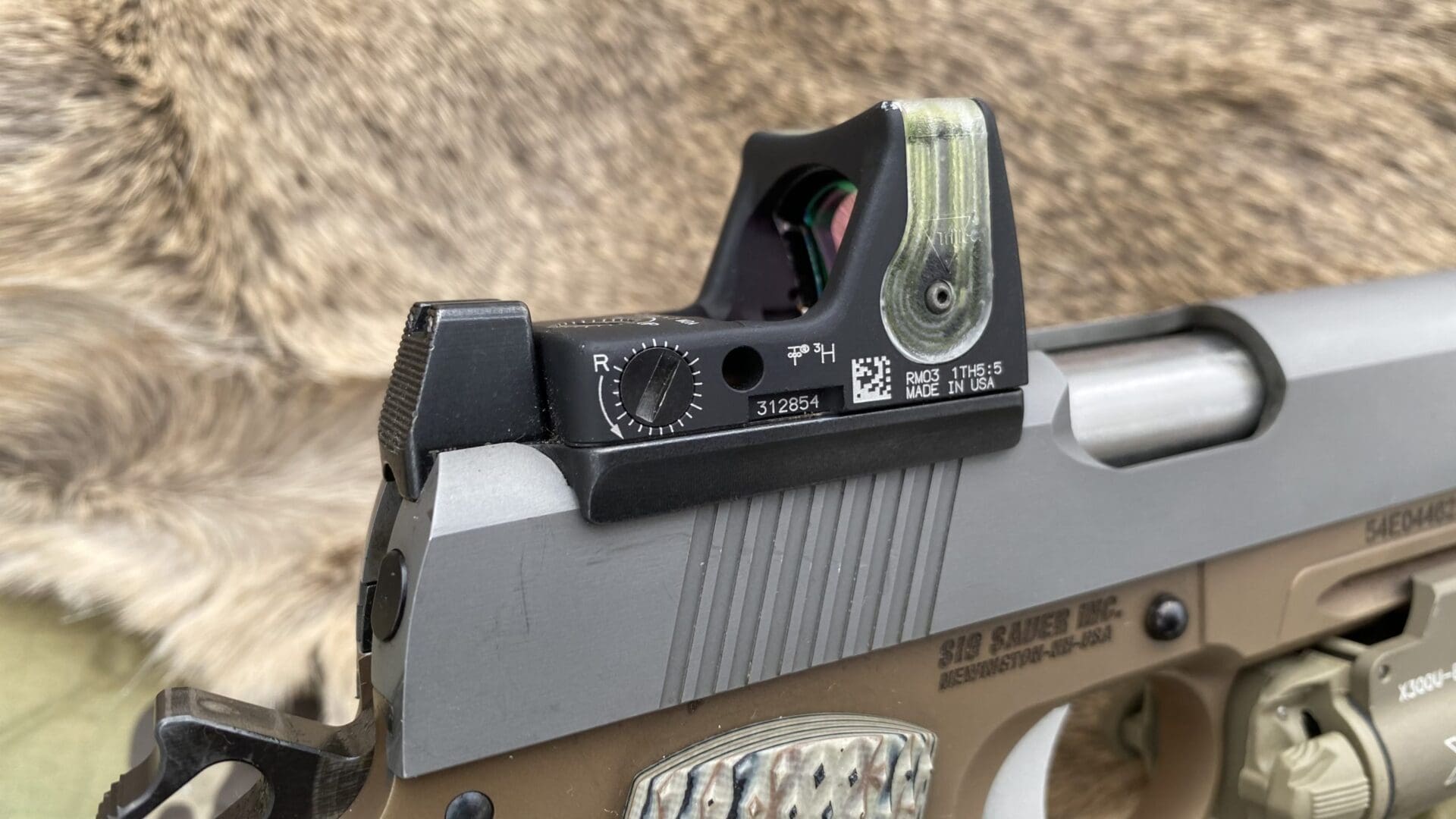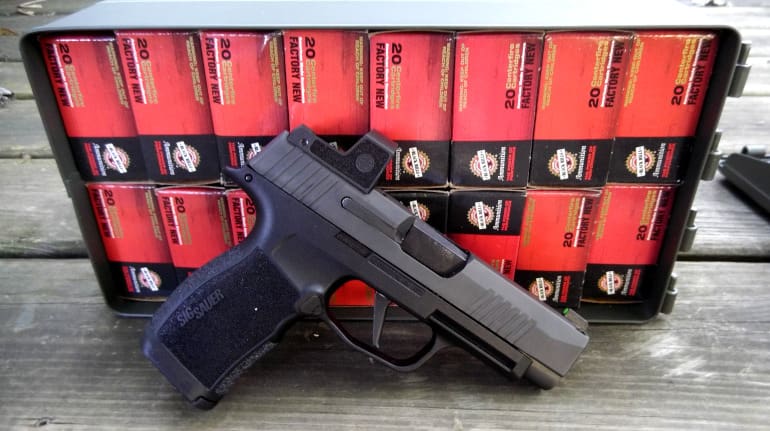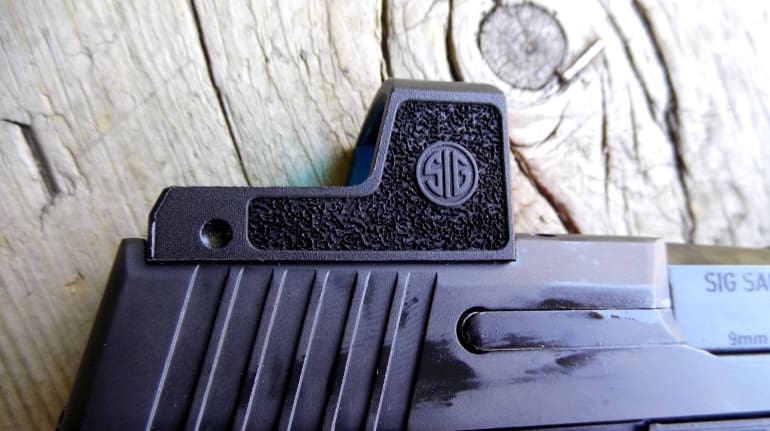
Have a question for Josh? Email it to [email protected].
TTAG Reader Todd emailed and asked the following about the growing trend to pistol optics:
When using red dot sights on a handgun, would it be best to have a simple front white dot sight and a rear blacked out sight? I’m seeing a lot of high visibility front sights like fiber optic or Sig x-ray sights. Wouldn’t that make fast shooting more difficult because the front sight would be competing for attention with the red dot? Or would a high visibility front sight be better because you could easily look for that first, then use the dot?
Todd asks a very good question because there seems to be so little standardization or even good schools of thought on the topic. Everyone has their own opinions on it and I think that we may, down the road, see some slides machined for a red dot with no provision for iron sights at all.
Iron sights are one of those basic items that seem to have largely gone by the wayside with rifles. Most factory guns today don’t come with them except traditional models like lever actions or replicas.
Guns like the M1A still use them, and it’s common to find them on match guns and as backups on carbines. The utility of iron sight has declined over the years as optics have improved and become more reliable, compact and affordable.

Mastery of irons is still a very important skill to have, even today. I don’t for the life of me understand why you wouldn’t at least have a set of folding backup sights on a carbine, even if they go totally unused. All of mine have a 25 or 100-yard zero and I make sure I can keep hits on an IDPA target at 300 yards. I fold them and put the scope on.
Only once in competition did I have to remove a scope and use irons and that had so much more to do with my own poor equipment choice than the quality of the optics. I used the irons for the rest of the match and did just fine.
In a similar situation, I was hunting when I had a scope get caught up in the brush. The windage and elevation turrets were both off and I wasn’t sure which direction they were spun in. I had a QD base and took the scope off and got my deer with the irons.

Pistols have only recently began to see a proliferation of so many good optics choices and there is already some debate as to what arrangements are best. The main situation is the same argument as the old days of the rifle optic. Do you have it mounted high? With a 1/3 co-witness? Complete cowitness?
The arguments go on and on, and I have my own preferences here that I’m sure would be debated, but I’ll save those for another time.

The fact is that most handguns are only rudimentary in terms of how they mount optics. Because of how most modern handguns function, the red dot is either secured to the frame or to the slide. The barrel is always a separate moving part.
Some guns, usually .22LR pistols, have rails that integrate over the barrel and provide a union that’s very rigid with few moving parts. The mounting of a red dot to a pistol today is a compromise, but it’s functional nevertheless.
The main optic to beat for a lot of shooters is the Trijicon RMR. This little sight is extremely rugged and can withstand just about any recoil. I have one on my custom 1911 and it has proved to be excellent in the field and at the range.
The one I have is in a specifically designed for a 1911 mount with an integral set of irons that mounts into a dedicated Ed Brown slide. This assembly allows the sight to be mounted quite low and the iron sights, all of which are bright tritium, are co-witnessed to the lower 1/3 of the sight.

Visually it’s a lot to look at when you’re searching for just the dot. I have not had any problems and I question if I even need irons on the gun. Todd’s question is legitimate in that it’s true that illuminated or highly visible irons can create a distraction and make the dot harder to find.
If it’s up to me, I prefer no illumination on the irons at all and use them simply as a mechanical sighting option in case the red dot gets obscured or fails. It’s possible to get some crud in there on a reflex sight and lose clarity on the dot on the RMR, and I’ve had that happen when shooting with a wet suppressor.

As I said earlier I think in the next few years you’ll start to see some slides machined for optics only with no provision for irons. Many factory guns now come with the slide already machined for optics, and the basic option irons are immediately obscured when a dot is installed. Why even have irons in that case?
Give it some time and we will start seeing the same trend as ARs have had where they all used to ship with some form of irons and then all of a sudden they came with none.

My advice to Todd: keep it simple if you are shooting with a dot. Many guys out there now are carrying and shooting guns with optics and the front sight is just a decoration. I use my RMR-equipped 1911 for hunting and I like the added three-dot tritium sights. I am never out there quick-drawing on deer, so I have plenty of time to set up the dot.
If you’re shooting in matches for speed, you may want to forgo irons entirely and just use the red dot. Better yet, if you want to shoot dots and irons in competition, just get a dedicated optics slide for your matches.
Have a question for Josh? Email it to [email protected].




The answer is
There is no best
It all depends. Personally I think we all know that.
The better question is “what is best for you?”
Eventually going for pistol red dot. It sure makes a helluva difference on my rifle. I can’t use the iron sights so took them off. Eventually getting eyes fixed so mebbe I’ll reinstall them.
Irons are always best for me on all my rifle platforms. But I’ve noticed a change in the sight picture while shooting handguns, and several of my friends have switched to RMRs on theirs and now swear by them. I might try one, though the expected range and duration of a defensive handgun shootout wouldn’t need any optics…
That sure is a purdy 1911 I must say.
Some guns, usually .22LR pistols, have rails that integrate over the barrel and provide a union that’s very rigid with few moving parts.
I put a Burris Fastfire II optic on top of my Browning BuckMark pistol. The sight and barrel are one solid non-moving part, and I can shoot 10 round groups at 25 yds. that are about 1.25″ across, from a bench rest of course. Great fun. My old eyes could never come close to that with iron sights.
However, the sight requires a Pic adapter plate and when mounted, the red dot axis is about 1.45″ above the barrel axis, which is a little high. The barrel has a nice fiber optic front sight and it ends up well below the optic window when pointing on target. I can pick up the dot when presenting the pistol quickly most of the time, but sometimes not.
I’m not sure why anyone would want to have a 100% co-witness of iron and red dot (too cluttered), but the lower 1/3 witness sounds really nice.
If possible, I would try the red dot out before you make a permanent change to “your” pistol. I was fortunate to pick up a MR920 elite with optics cut and traded for an rmr to tryout. I am fond of my colt 1911’s and when the rmrcc came out I became interested in the red dot but did not want to make any permanent modifications to them without making sure it is something I was going to prefer and use. After 6 months of carry it turns out the red dot is not for me. As always figure out what works best for you in your situation and learn to use your tool.
I have a Sig Romeo co-witnessed on my Ruger Max 9 and I use the excellent front sight to quickly “find” the red dot. I am much, much more accurate with the dot over the “irons”. If the Romeo ever fails the Ruger sights are right there.
Great article, thanks. I’d like to see more comments about personal experience on the matter. I think red dot pistol sights are overrepresented online.
I’ve had two Sig pistol optics and both had to go back to Sig. They’re garbage. Good customer service – they gave me new units which I promptly got rid of for a real, reliable optic.
Sage Dynamics has a brutal optics testing standard – if it passes his gauntlet, consider it good to go (so far only Trijicon, Holosun and Deltapoint have actually survived).
My competition pistols don’t even have irons on them.
My carry guns usually have co-witness setups in case the dot goes out for some reason.
Comments are closed.